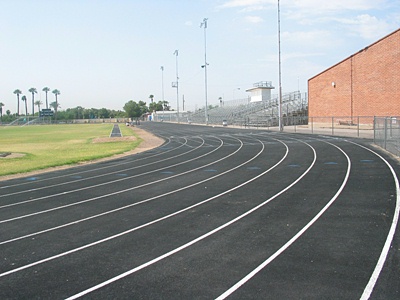All Nonfiction
- Bullying
- Books
- Academic
- Author Interviews
- Celebrity interviews
- College Articles
- College Essays
- Educator of the Year
- Heroes
- Interviews
- Memoir
- Personal Experience
- Sports
- Travel & Culture
All Opinions
- Bullying
- Current Events / Politics
- Discrimination
- Drugs / Alcohol / Smoking
- Entertainment / Celebrities
- Environment
- Love / Relationships
- Movies / Music / TV
- Pop Culture / Trends
- School / College
- Social Issues / Civics
- Spirituality / Religion
- Sports / Hobbies
All Hot Topics
- Bullying
- Community Service
- Environment
- Health
- Letters to the Editor
- Pride & Prejudice
- What Matters
- Back
Summer Guide
- Program Links
- Program Reviews
- Back
College Guide
- College Links
- College Reviews
- College Essays
- College Articles
- Back
Running-Specific Prostheses: Able or Disabled?
In today’s world, technology is greatly improving and “sci-fi” is slowly becoming reality. In terms of athletics, research scientists and engineers are trying to improve the prostheses used in competition. For athletes such as Oscar Pistorius and Kelly Cartwright, prostheses are allowing them to compete at the elite level. Both being amputees, who compete with the best athletes in the world, every aspect of their performance is vital in their success and downfall. In most competitive events, every improvement matters, but with every improvement, there is doubt and controversy.
The prostheses used by these athletes are a main topic of much debate. In the Olympics, where the most prestigious athletes compete at the highest level, even wind currents are taken into account in races to involve the most accurate times and distances. With this in mind, one would think that having prostheses that do not completely resemble biological limbs would bring up some inaccuracy. Within the past decade, some research has been conducted to indentify the role of prostheses in an amputee’s physical ability, but still, there is uncertainty regarding the advantages and disadvantages that may be present. Previous studies, by research scientists, show that amputees, though becoming very competitive, are still subjected to unfair disadvantages that result from their use of prostheses. Data shows that prostheses apply a 15% weaker ground force, which translates to a lesser maximum speed. Also, the absence of bones and joints in the leg-ankle area makes it difficult for amputees to run around the curves of the track. Even with these disadvantages, amputees are gradually inching towards the ultimate goal of being the top athlete in the world. So, with more research, could it be possible to unleash the true potential of these athletes?
Today, amputees are constantly getting closer to the threshold of what people consider elite. Oscar Pistorius, the first double amputee to compete in the Olympics, narrowly missed the medal podium, earning him the title of being the fourth best 400m runner in the world, thus proving amputees’ abilities. Often people take for granted the new technologies that are being developed. Able-bodied athletes will not be able o fathom the magnitude of these new advances. However, it is imperative to continue this research in order to make new improvements and apply this to other common applications.

Similar Articles
JOIN THE DISCUSSION
This article has 0 comments.
